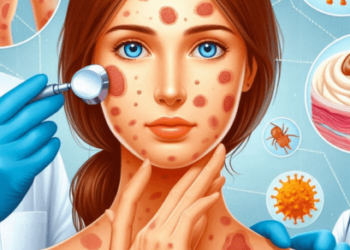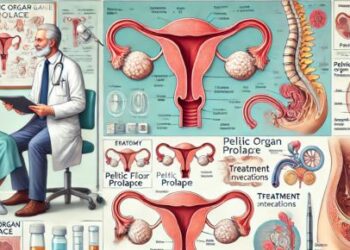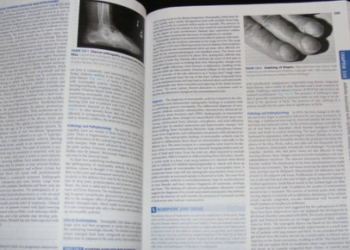1. Measles and chickenpox are both viral infections that primarily affect children, but they are caused by different viruses and have distinct symptoms, complications, and treatments. Let’s explore the key differences between these two contagious diseases.
2. Causative Virus
Measles is caused by the measles virus, while chickenpox is caused by the varicella-zoster virus. These viruses belong to different viral families and have unique characteristics.
3. Transmission
Both measles and chickenpox are highly contagious and can spread through respiratory droplets from coughing or sneezing, as well as direct contact with the fluid from the blisters in the case of chickenpox.
4. Incubation Period
The incubation period, or the time between exposure to the virus and the onset of symptoms, differs between measles and chickenpox. Measles has a longer incubation period of around 10 to 14 days, while chickenpox typically has an incubation period of 10 to 21 days.
5. Symptoms of Measles
Measles typically begins with symptoms such as high fever, cough, runny nose, and red, watery eyes. A characteristic rash appears a few days later, starting on the face and spreading downward to the rest of the body.
6. Symptoms of Chickenpox
Chickenpox usually starts with a fever, headache, and fatigue, followed by the appearance of itchy red spots that develop into fluid-filled blisters. The rash tends to be more concentrated on the trunk and then spreads to the face, arms, and legs.
7. Rash Characteristics
While both measles and chickenpox cause rashes, there are differences in their appearance. The measles rash consists of flat, red spots that merge together, giving the skin a blotchy appearance, whereas the chickenpox rash starts as red bumps and progresses to fluid-filled blisters.
8. Complications of Measles
Measles can lead to severe complications, especially in young children and immunocompromised individuals. These complications may include pneumonia, encephalitis (brain inflammation), and in rare cases, death.
9. Complications of Chickenpox
While chickenpox is usually a mild illness in healthy children, it can lead to complications such as bacterial skin infections, pneumonia, and encephalitis. Pregnant women and individuals with weakened immune systems are at higher risk of severe complications.
10. Vaccination
Vaccination is the most effective way to prevent both measles and chickenpox. The measles vaccine is typically administered as part of the measles, mumps, and rubella (MMR) vaccine, while the chickenpox vaccine is given separately.
11. Measles Outbreaks
Measles outbreaks can occur in communities with low vaccination rates, as the virus is highly contagious. Public health efforts to increase vaccination coverage are crucial for preventing outbreaks and protecting vulnerable populations.
12. Chickenpox Vaccination
Routine vaccination against chickenpox has led to a significant decrease in the incidence of the disease in many countries. Vaccination not only prevents chickenpox but also reduces the risk of severe complications and transmission of the virus.
13. Treatment
There is no specific antiviral treatment for measles or chickenpox. Supportive care, such as rest, fluids, and fever-reducing medications, can help alleviate symptoms and prevent complications.
14. Containment Measures
During outbreaks of measles or chickenpox, containment measures such as isolation of infected individuals, contact tracing, and vaccination campaigns may be implemented to control the spread of the disease.
15. Immunity
Recovery from measles or chickenpox generally confers lifelong immunity to the respective viruses. However, immunity can wane over time, particularly in the case of chickenpox, leading to a risk of shingles later in life.
16. Impact on Public Health
Measles and chickenpox continue to pose challenges to public health worldwide, despite the availability of vaccines. Ongoing efforts to improve vaccination coverage, surveillance, and outbreak response are essential for disease control.
17. Global Burden
Measles remains a leading cause of vaccine-preventable deaths worldwide, particularly in low-income countries with limited access to healthcare and vaccination services. Chickenpox, while usually less severe, still contributes to morbidity and healthcare costs.
18. Prevention Strategies
In addition to vaccination, practicing good hygiene, such as frequent handwashing and covering coughs and sneezes, can help prevent the spread of measles, chickenpox, and other infectious diseases.
19. Educational Campaigns
Public health authorities often conduct educational campaigns to raise awareness about the importance of vaccination, recognize the symptoms of measles and chickenpox, and promote early diagnosis and treatment.
20. Importance of Timely Vaccination
Vaccination against measles and chickenpox is typically recommended in early childhood to provide immunity before potential exposure to the viruses. Catch-up vaccination is also available for individuals who may have missed doses.
21. Travel Considerations
Travelers should be aware of the risk of measles and chickenpox in different regions and ensure they are up to date with their vaccinations before traveling, particularly to areas experiencing outbreaks.
22. Parental Responsibility
Parents play a crucial role in protecting their children from measles and chickenpox by ensuring they receive timely vaccinations and following recommended healthcare guidelines for preventing infection and seeking medical care when needed.
23. Healthcare Provider Role
Healthcare providers play a key role in educating patients about the risks of measles and chickenpox, recommending appropriate vaccination schedules, and identifying and managing cases of the diseases in clinical settings.
24. Public Health Surveillance
Surveillance systems monitor the incidence of measles and chickenpox, track outbreaks, and assess vaccination coverage to inform public health interventions and control measures.
25. Conclusion: Stay Informed and Vaccinated
Understanding the differences between measles and chickenpox, recognizing their symptoms, and prioritizing vaccination are essential steps in protecting individuals and communities from these contagious diseases. By staying informed and vaccinated, we can work together to prevent the spread of measles and chickenpox and promote public health and well-being.













